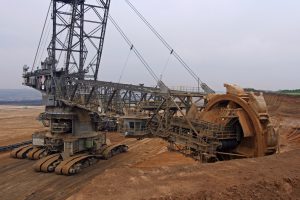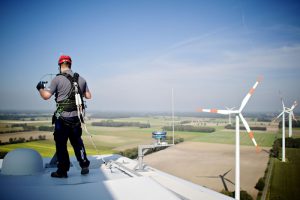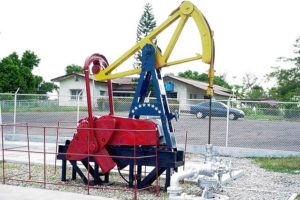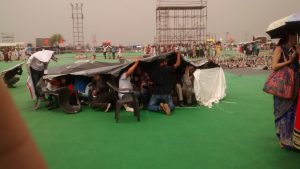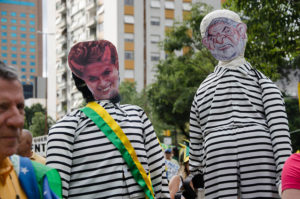Germany has made a name for itself as a pioneer of the transition to renewable energy. The “Energiewende” has grown out of an anti-nuclear protest movement responding to the Chernobyl disaster in 1986, to become a central pillar of German policy. In 2015, close to a third of the country’s power needs were covered by renewable energy – up from just 6.3% in 2000.
But a system based on renewable energy — at the mercy of the weather — is very different from one in which centralised power stations generate electricity according to demand. And Germany’s power grid is struggling to keep up.
Upgrading the power network to meet the challenges of green power isn’t just expensive and time-consuming. It has also sparked public protest and raised controversial questions about who should have ownership of the future energy system.
The most high profile headache for Germany’s grid operators has been extensions to the high-voltage transmission grid that they – as well the government in Berlin and numerous expert studies – insist are essential to keep the system running smoothly.
Jamming the network
Germany’s biggest source of renewable energy is wind, which accounted for around 13% of German power production in 2015. In that years alone, 3.5 gigawatts of onshore wind capacity and 2 gigawatts of offshore wind capacity went online in Germany, mostly in the country’s gusty north – on the Baltic coast and North Sea.
On stormy days when power production shoots up – and particularly when demand in the north is low – the abundance of power pushes down wholesale electricity prices. Industrial consumers, and power supply companies, respond by buying up the cheap renewable power.
The problem is, the windswept northern climes where all this power is being generated are a long way from the country’s big industrial centres in the south – and the power lines connecting the two just aren’t up to the job.
To stabilise the network and prevent congestion, grid operators have to leap into action, ordering fossil fuel power plants in the north to shut down generation (for which they must be compensated), and ramping them up in the south to supply power already sold there (which must be paid for, at above market prices). At times, the wind farms are taken offline, too (and they too must be compensated).
Rising costs
All these costs are passed on to consumers through their electricity bills, and have become the main cause of rising power prices in Germany.
Germany in any case has among the highest consumer power prices in Europe – largely because of the surcharge that consumers pay to support the development of renewable power generation. The energy transition has broad public support in Germany. But if anything is prone to undermine enthusiasm, it’s high costs.
And pressure on the grid is only expected to rise. Germany’s commitment to give up nuclear power by 2022 will prompt shutdowns of two nuclear power plants in Bavaria making the south ever more reliant on northern wind.
Public protest
To fix the problem, grid operators are planning bigger, better, more efficient grid connections. But operators must submit their development plans to a long process of political and public consultation. And the maximum voltage power lines, strung from towering pylons, aren’t popular in the towns and villages that lie in their path.
The loudest resistance has come from Bavarian protest groups concerned about the impacts – on health, the environment and property prices – of the giant power lines running through their back yards.
After years of delay and debate, a breakthrough finally came last summer. Berlin announced regulatory changes allowing much of extension to be laid underground.
Underground lines are far more expensive to install and maintain, and not without their environmental impacts – forest and farmland have to be cleared to make way for them. But Bavarian state premier Horst Seehofer – who initially supported the development of underground lines but then backed off under public pressure – was back onside.
Groundhog Day
Late last year, the German parliament passed into law plans for 2,750 kilometres of new high voltage power grids to be built by 2024. Yet construction still seems a long way off.
“The planning process for the big lines needs to start again from scratch,” said Theresa Schneider of the Renewable Grid Initiative (RGI), an alliance of transmission grid operators and environmental groups. “For one of the big lines – Suedlink – this means the best part of three years of planning and permitting are obsolete and we’re back to square one.”
The requirements for laying underground cables are different from overhead lines, which means new routes must be found and approved. The underground lines are supposed to meet less resistance. But not everyone is convinced.
“I have talked to several grid operators and they are all very sceptical,” Schneider said. “The protest groups don’t necessarily want underground cables in their community either.”
On the other side of the debate, Friends of the Earth Germany (BUND) – one of the few major environmental groups still questioning whether the development is needed – is just as frustrated.
“It’s like Groundhog Day,” said BUND’s Werner Neumann, as he prepared to submit a fresh statement on the organisation’s objection to the process on Monday, arguing there has been no proper assessment of alternative solutions.
Regional balance
The alternative championed by many protestors against the grid extension is a more decentralised energy system.
BUND proposes a model in which regional controllers calibrate the balance of grid using renewables, combined heat and power, and power storage, buying direct from local producers – and topping up or selling excess on the nationwide wholesale market where needed.
Neumann says it comes down to the kind of energy system Germany wants to build. He argues massive grid expansion plans are a symptom of modelling the future energy system along the same, centralised lines of old.
Offshore wind is the only renewable source in Germany owned by big energy companies. Close to half of the rest – onshore wind, PV solar and biogas – is owned by private individuals, citizens’ energy cooperatives and publicly-owned local utilities.
“Decentralised energy isn’t only about location, it’s about how it is organised, who it’s owned by,” said Neumann. “We’re not just talking about kilowatt-hours but empowering people and citizens’ energy initiatives.”
Challenges for the distribution grid
The smaller installations also pose a challenge for the grid – particularly for local distribution grids. With local producers now feeding electricity onto the grid, power doesn’t just flow from the high-voltage transmission grid down to the low voltage local networks, but also back the other way.
This means the distribution grid needs upgrading, with flexible transformers installed to cope with power flowing in both directions.
Unlike the transmission grid, which is carved up into four areas, each controlled by a big operator, these local networks are in the hands of around 900 regional operators, including many state-owned municipal utilities.
Although decentralised local grids and operators are becoming more important, they have received less attention and investment compared to the transmission grid operators, said Neumann. “Better organised regional distribution and collection may be helpful to reduce the need for extension of the transport grid.”
But Neumann admits, “the national plan from the government and Federal Network Agency is not in favour of these decentralised concepts,” and that the fight will now be more over the details of how, rather that if, the grid extension will go ahead.
Other solutions are still being discussed – for example, regional pricing to reflect the costs of transporting power. But these are seen more as a compliment to transmission grid extension, to alleviate the problem while Germany waits for the long process of approval and construction to be completed.
“In the end, the lines will be built. It’s just a matter of time,” said Schneider of RGI.
